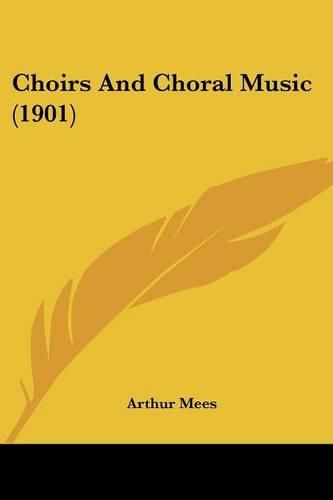Readings Newsletter
Become a Readings Member to make your shopping experience even easier.
Sign in or sign up for free!
You’re not far away from qualifying for FREE standard shipping within Australia
You’ve qualified for FREE standard shipping within Australia
The cart is loading…






Purchase of this book includes free trial access to www.million-books.com where you can read more than a million books for free. This is an OCR edition with typos. Excerpt from book: Ill In the Mediaeval Church WHILE the organisers did not restrict themselves to the use of only those intervals sanctioned by theorists under a misapprehension of the musical system of the Greeks, they were slow to venture on extemporising melodies rhythmically different from the given one for fear of creating confusion among the singers. Nevertheless the seductive charm of creative activity led to experiments in this direction too, and thus in the course of time the art of discant originated. Its home was France, the country in which the sense of harmony appears to have developed most rapidly up to a certain point. There were two kinds of discant, the simple and the florid. The latter of these signalised the most decided improvement on the orga- num, for its rules permitted the introduction o(f ornaments, so-called fleurettes, which involved the adjustment of entire groups of tones to a single tone of the given melody and demonstrated the availability of intervals formerlyprohibited in theory. Discant was at first practised in two parts only, to the lower of which,, the tenor ( the holder ), the task of carrying or holding the cantus firmus was intrusted, while the upper one took charge of inventing. the discant, the counter-melody. In the course of time additional parts, called motetus, triplum and quadruplum, were added?terms which were not intended to designate particular varieties of voices but simply to indicate the order of the parts, the tenor being the lowest. To triplum, the
third
part, treble, the English designation for the highest voice in the chorus is traced. Its German equivalent diskant comes from- discant. The term soprano, the
highest is of later origin. For motetus, the etymology of which is obscure, the designations medius and altus, the mid…
$9.00 standard shipping within Australia
FREE standard shipping within Australia for orders over $100.00
Express & International shipping calculated at checkout
Purchase of this book includes free trial access to www.million-books.com where you can read more than a million books for free. This is an OCR edition with typos. Excerpt from book: Ill In the Mediaeval Church WHILE the organisers did not restrict themselves to the use of only those intervals sanctioned by theorists under a misapprehension of the musical system of the Greeks, they were slow to venture on extemporising melodies rhythmically different from the given one for fear of creating confusion among the singers. Nevertheless the seductive charm of creative activity led to experiments in this direction too, and thus in the course of time the art of discant originated. Its home was France, the country in which the sense of harmony appears to have developed most rapidly up to a certain point. There were two kinds of discant, the simple and the florid. The latter of these signalised the most decided improvement on the orga- num, for its rules permitted the introduction o(f ornaments, so-called fleurettes, which involved the adjustment of entire groups of tones to a single tone of the given melody and demonstrated the availability of intervals formerlyprohibited in theory. Discant was at first practised in two parts only, to the lower of which,, the tenor ( the holder ), the task of carrying or holding the cantus firmus was intrusted, while the upper one took charge of inventing. the discant, the counter-melody. In the course of time additional parts, called motetus, triplum and quadruplum, were added?terms which were not intended to designate particular varieties of voices but simply to indicate the order of the parts, the tenor being the lowest. To triplum, the
third
part, treble, the English designation for the highest voice in the chorus is traced. Its German equivalent diskant comes from- discant. The term soprano, the
highest is of later origin. For motetus, the etymology of which is obscure, the designations medius and altus, the mid…